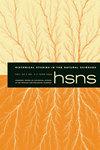粘性的解决方案
IF 0.3
3区 哲学
Q2 HISTORY & PHILOSOPHY OF SCIENCE
引用次数: 0
摘要
本文探讨了二十世纪中期日本木材研究和制造社区中动物材料、阶级和背景在塑造社会价值方面的作用,重点关注动物胶(nikawa -)与其他粘合剂的关系。它将胶粘剂的重要性和可用性与其在多种技术社会背景下的价值联系起来,其中由哺乳动物皮肤、骨骼和蹄制成的胶粘剂仍然是木制品制造微型企业中的主要粘合剂,但在学术和企业实验室中被酪蛋白、大豆和碳基胶粘剂所取代。本文主要根据小规模制造业社区内的工业研究机构编制的研究报告和咨询记录,提出动物胶的物质化以及在实验室和车间之间以及周围存在的材料-能源-环境-工具-技能-知识的更大组合,都使人类用户高度明显地看到了这种物质化,并促使他们以高度不同的方式重视nikawa。取决于类和上下文。动物基胶水、植物基和碳基胶水以及与它们一起在制造过程中使用的其他物质的优点,导致不同的社会群体对它们的评价不同。结果是相邻但独立的社会群体之间的价值分歧,车间老板更喜欢使用动物胶,即使技术顾问努力消除小车间老板对动物胶的依恋或坚持,并促使他们采用更新,更“现代”的粘合剂,作为工业合理化和现代化的一部分。这篇论文是劳伦斯·道尼和丽莎·奥永编辑的题为“及时制作动物材料”的特刊的一部分。本文章由计算机程序翻译,如有差异,请以英文原文为准。
Sticky Solutions
This article explores the agency of animal materiality, class, and context in shaping social values within wood research and manufacturing communities in mid-twentieth-century Japan, with a focus on animal glues (nikawa 膠) in relation to other adhesives. It relates the materiality and affordances of adhesives to their value within multiple technosocial contexts, in which glues made from mammalian skin, bones, and hooves remained the predominant adhesive within wood product manufacturing microenterprises but were being replaced by casein-, soybean-, and carbon-based adhesives in academic and corporate laboratories. Working primarily from research reports and consultation records compiled by industrial research institutes embedded within small-scale manufacturing communities, the article proposes that the materiality of animal glues and the larger assemblage of materials-energy-environment-tools-skill-knowledge present in, between, and around labs and workshops both rendered that materiality highly evident to human users and prompted them to value nikawa in highly divergent ways, depending on class and context. The affordances of animal-based glues, alongside those of plant- and carbon-based glues and other substances used with them in manufacturing, led different social groups to value them differently. The result was a bifurcation of value between adjacent but separate social groups, with workshop owners preferring to use animal glues, even as technical advisors labored to dissolve small workshop owners’ attachment or adherence to animal glues, and to prompt them to adopt newer, more “modern” adhesives as part of industrial rationalization and modernization. This paper is part of a special issue entitled “Making Animal Materials in Time,” edited by Laurence Douny and Lisa Onaga.
求助全文
通过发布文献求助,成功后即可免费获取论文全文。
去求助
来源期刊

Historical Studies in the Natural Sciences
社会科学-科学史与科学哲学
CiteScore
1.00
自引率
0.00%
发文量
24
审稿时长
>12 weeks
期刊介绍:
Explore the fascinating world of Historical Studies in the Natural Sciences, a journal that reveals the history of science as it has developed since the 18th century. HSNS offers in-depth articles on a wide range of scientific fields, their social and cultural histories and supporting institutions, including astronomy, geology, physics, genetics, natural history, chemistry, meteorology, and molecular biology. Widely regarded as a leading journal in the historiography of science and technology, HSNS increased its publication to five times per year in 2012 to expand its roster of pioneering articles and notable reviews by the most influential writers in the field.
 求助内容:
求助内容: 应助结果提醒方式:
应助结果提醒方式:


